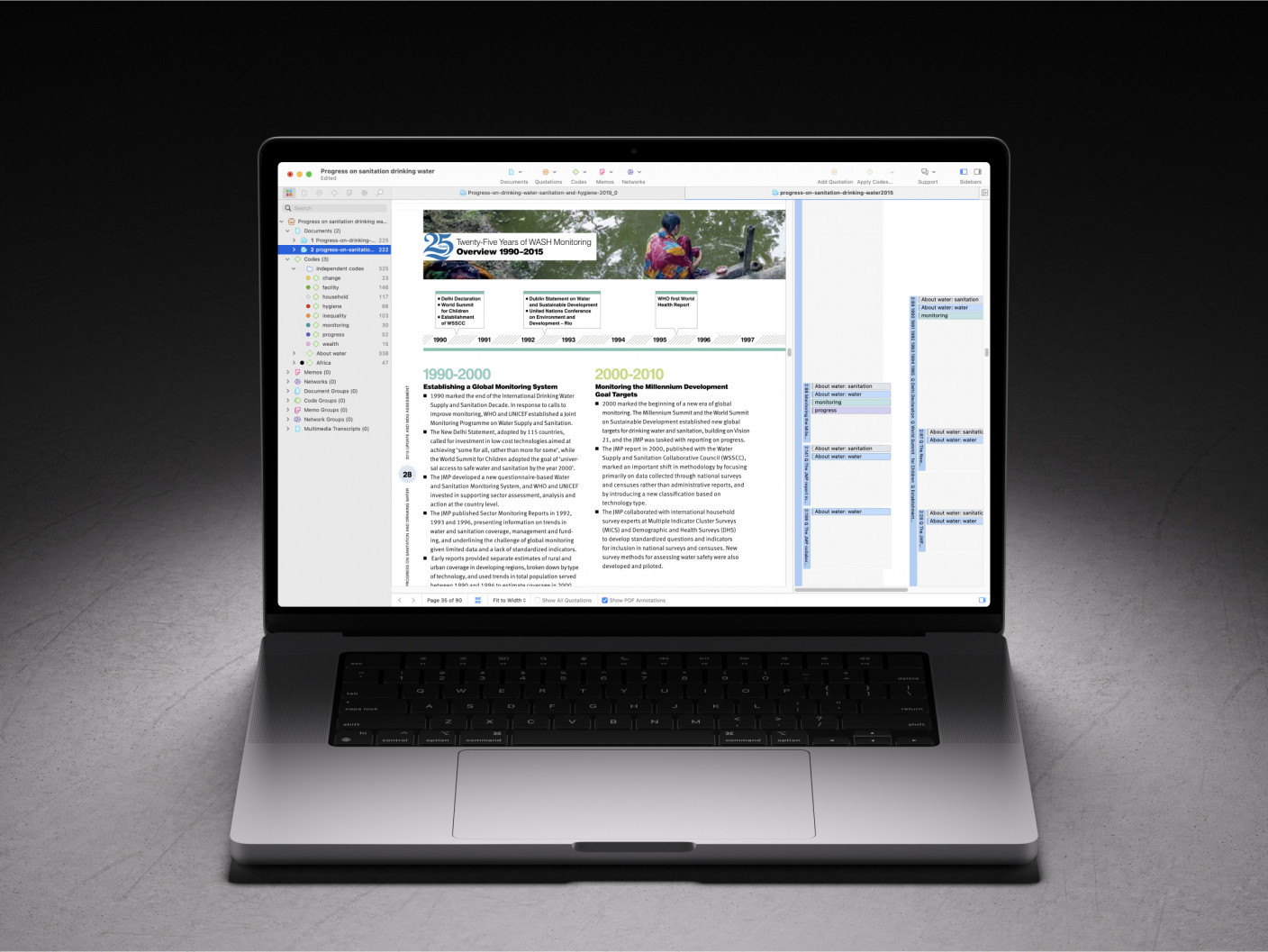- Presenting qualitative data
- Data visualization
- Research paper writing
- Transparency and rigor
- How to publish a research paper
- How to cite "The Ultimate Guide to Qualitative Research - Part 3"
Transparency and rigor in research
Qualitative researchers face particular challenges in convincing their target audience of the value and credibility of their subsequent analysis. Numbers and quantifiable concepts in quantitative studies are relatively easier to understand than their counterparts associated with qualitative methods. Think about how easy it is to make conclusions about the value of items at a store based on their prices, then imagine trying to compare those items based on their design, function, and effectiveness.
The goal of qualitative data analysis is to allow a qualitative researcher and their audience to make determinations about the value and impact of the research. Still, before the audience can reach these determinations, the process of conducting research that produces the qualitative analysis must first be perceived as credible. It is the responsibility of the researcher to persuade their audience that their data collection process and subsequent analysis are rigorous.

What is rigor in qualitative research?
Qualitative rigor refers to the meticulousness, consistency, and transparency of the research. It is the application of systematic, disciplined, and stringent methods to ensure the credibility, dependability, confirmability, and transferability of research findings. In qualitative inquiry, these attributes ensure the research accurately reflects the phenomenon it is intended to represent, that its findings can be used by others, and that its processes and results are open to scrutiny and validation.
Credibility
Credibility refers to the extent to which the results accurately represent the participants' experiences. To achieve credibility, qualitative researchers, especially those conducting research on human research participants, employ a number of strategies to bolster the credibility of the data and the subsequent analysis. Prolonged engagement and persistent observation, for example, involve spending significant time in the field to gain a deep understanding of the research context and to continuously observe the phenomenon under study. Peer debriefing involves discussing the research and findings with knowledgeable peers to assess their validity. Member checking involves sharing the findings with the research participants to confirm that they accurately reflect their experiences. These and other methods ensure an abundantly rich data set from which the researcher describes in vivid detail the phenomenon under study, and which other scholars can audit to challenge the strength of the findings if necessary.
Dependability
Dependability refers to the consistency of the research process such that it is logical and clearly documented. It addresses the potential for others to build on the research through subsequent studies. To achieve dependability, researchers should provide a 'decision trail' detailing all decisions made during the course of the study. This allows others to understand how conclusions were reached and to replicate the study if necessary. Ultimately, the documentation of a researcher's process while collecting and analyzing data provides a clear record not only for other scholars to consider but also for those conducting the study and refining their methods for future research.
Confirmability
Confirmability requires the research findings to be directly linked to the data. While it is important to acknowledge researcher positionality (e.g., through reflexive memos) in social science research, researchers still have a responsibility to make assertions and identify insights rooted in the data for the resulting knowledge to be considered confirmable. By transparently communicating how the data was analyzed and conclusions were reached, researchers can allow their audience to perform a sort of audit of the study. This practice helps remind researchers about the importance of ensuring that there are sufficient connections to the raw data collected from the field and the findings that are presented as consequential developments of theory.
Transferability
Transferability refers to the applicability of the research findings in other contexts or with other participants. While dependability is more relevant to the application of research within its own situated context, transferability is determined by how findings generated in one set of circumstances (e.g., a geographic location or a culture) apply to another set of circumstances. This is essentially a significant challenge since, given the unique focus on context in qualitative research, researchers can't usually claim that their findings are universally applicable. Instead, they provide a rich, detailed description of the context and participants, enabling others to determine if the findings may apply to their own context. As a result, such detail necessitates discussion of transparency in research, which will be discussed later in this section.
Reflexivity
The concept of reflexivity also contributes to rigor in qualitative research. Reflexivity involves the researcher critically reflecting on the research and their own role in it, including how their biases, values, experiences, and presence may influence the research. Any discussion of reflexivity necessitates a recognition that knowledge about the social world is never objective, but always from a particular perspective. Reflexivity begins with an acknowledgment that those who conduct qualitative research do so while perceiving the social world through an analytical lens that is unique and distinct from that of others. As subjectivity is an inevitable circumstance in any research involving humans as sources or instruments of data collection, the researcher is responsible for providing a thick description of the environment in which they are collecting data as well as a detailed description of their own place in the research. Subjectivity can be considered as an asset, whereby researchers acknowledge and indicate how their positionality informed the analysis in ways that were insightful and productive.
Triangulation
Triangulation is another key aspect of rigor, referring to the use of multiple data sources, researchers, or methods to cross-check and validate findings. This can increase the depth and breadth of the research, improve its quality, and decrease the likelihood of researcher bias influencing the findings. Particularly given the complexity and dynamic nature of the social world, one method or one analytical approach will seldom be sufficient in holistically understanding the phenomenon or concept under study. Instead, a researcher benefits from examining the world through multiple methods and multiple analytical approaches, not to garner perfectly consistent results but to gather as much rich detail as possible to strengthen the analysis and subsequent findings.
In qualitative research, rigor is not about seeking a single truth or reality, but rather about being thorough, transparent, and critical in the research to ensure the integrity and value of the study. Rigor can be seen as a commitment to best practices in research, with researchers consistently questioning their methods and findings, checking for alternative interpretations, and remaining open to critique and revision. This commitment to rigor helps ensure that qualitative research provides valid, reliable, and meaningful contributions to our understanding of the complex social world.
Why is transparent research important?
When you read a story in a newspaper or watch a news report on television, do you ever get the feeling that you may not be receiving all the information or context necessary to understand the overarching messages being conveyed? Perhaps a salesperson is trying to convince you to buy something from them by explaining all the benefits of a product but doesn't tell you how they know these benefits are real. When you're choosing a movie to watch, you might look at a critic's review or a score in an online movie database without actually knowing how that review or score was actually determined.

In all of these situations, it is easier to trust the information presented to you if there is a rigorous analysis process behind that information and if that process is explicitly detailed. The same is true for qualitative research results, making transparency a key element in qualitative research methodologies. Transparency is a fundamental aspect of rigor in qualitative research. It involves the clear, detailed, and explicit documentation of all stages of the research process. This allows other researchers to understand, evaluate, transfer, and build upon the study. The key aspects of transparency in qualitative research include methodological transparency, analytical transparency, and reflexive transparency.
Methodological transparency involves providing a comprehensive description of the research methods and procedures used in the study. This includes detailing the research design, sampling strategy,data collection methods, and ethical considerations. For example, researchers should thoroughly describe how participants were selected, how and where data were collected (e.g., interviews, focus groups, observations), and how ethical issues such as consent, confidentiality, and potential harm were addressed. They should also clearly articulate the theoretical and conceptual frameworks that guided the study. Methodological transparency allows other researchers to understand how the study was conducted and assess its trustworthiness.
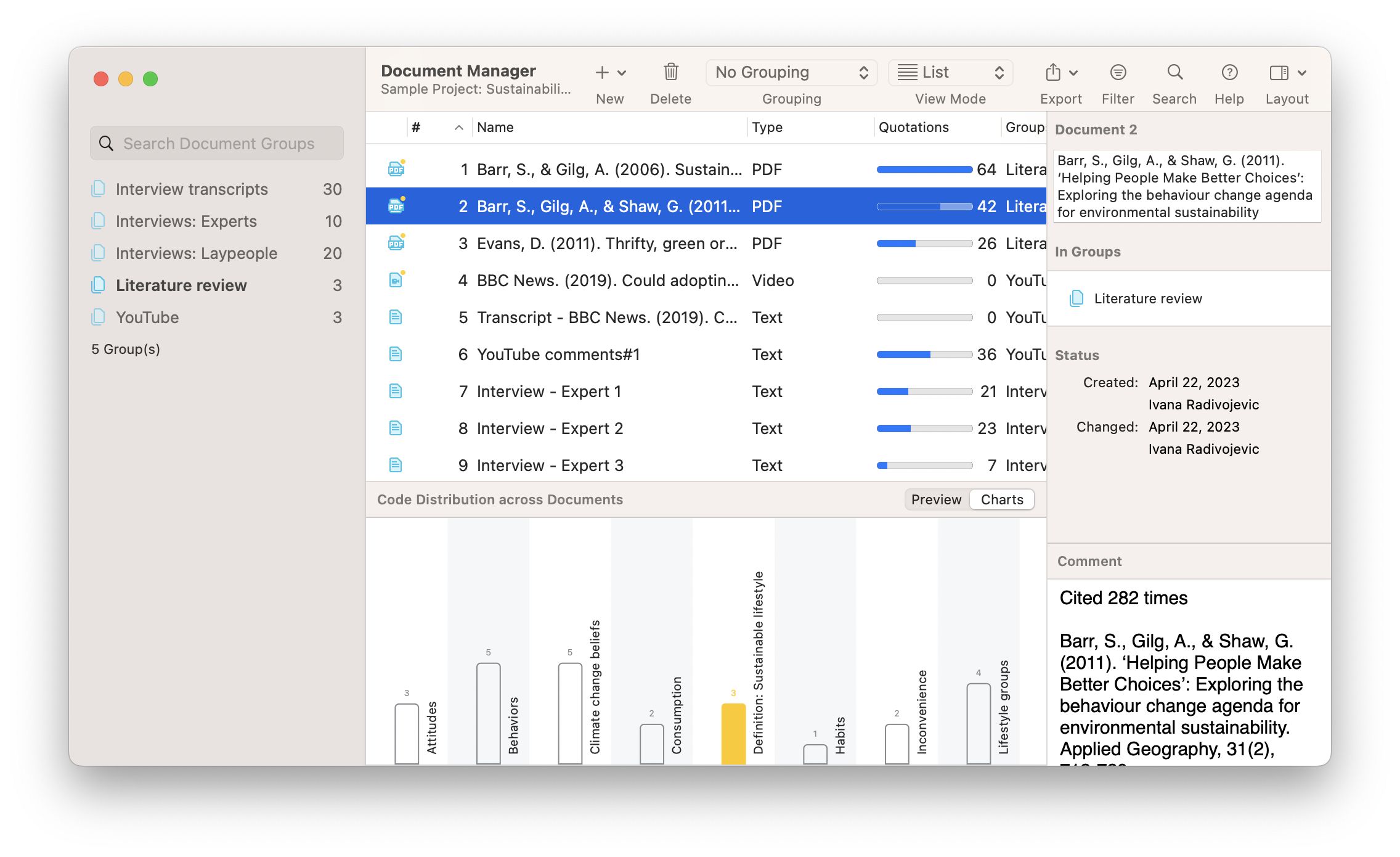
Analytical transparency refers to the clear and detailed documentation of the data analysis process. This involves explaining how the raw data were transformed into findings, including the coding process, theme/category development, and interpretation of results. Researchers should describe the specific analytical strategies they used, such as thematic analysis, grounded theory, or discourse analysis. They should provide evidence to support their findings, such as direct quotes from participants. They may also describe any software they used to assist with analyzing data. Analytical transparency allows other researchers to understand how the findings were derived and assess their credibility and confirmability.
Reflexive transparency involves the researcher reflecting on and disclosing their own role in the research, including their potential biases, assumptions, and influences. This includes recognizing and discussing how the researcher's background, beliefs, and interactions with participants may have shaped the data collection and analysis. Reflexive transparency may be achieved through the use of a reflexivity journal, where the researcher regularly records their thoughts, feelings, and reactions during research. This aspect of transparency ensures that the researcher is open about their subjectivity and allows others to assess the potential impact of the researcher's positionality on the findings.

Transparency in qualitative research is essential for maintaining rigor, trustworthiness, and ethical integrity. By being transparent, researchers allow their work to be scrutinized, critiqued, and improved upon, contributing to the ongoing development and refinement of knowledge in their field.
How do you achieve transparency and rigor in research?
Rigorous, trustworthy research is research that applies the appropriate research tools to meet the stated objectives of the investigation. For example, to determine if an exploratory investigation was rigorous, the investigator would need to answer a series of methodological questions: Do the data collection tools produce appropriate information for the level of precision required in the analysis? Do the tools maximize the chance of identifying the full range of what there is to know about the phenomenon? To what degree are the collection techniques likely to generate the appropriate level of detail needed for addressing the research question(s)? To what degree do the tools maximize the chance of producing data with discernible patterns?
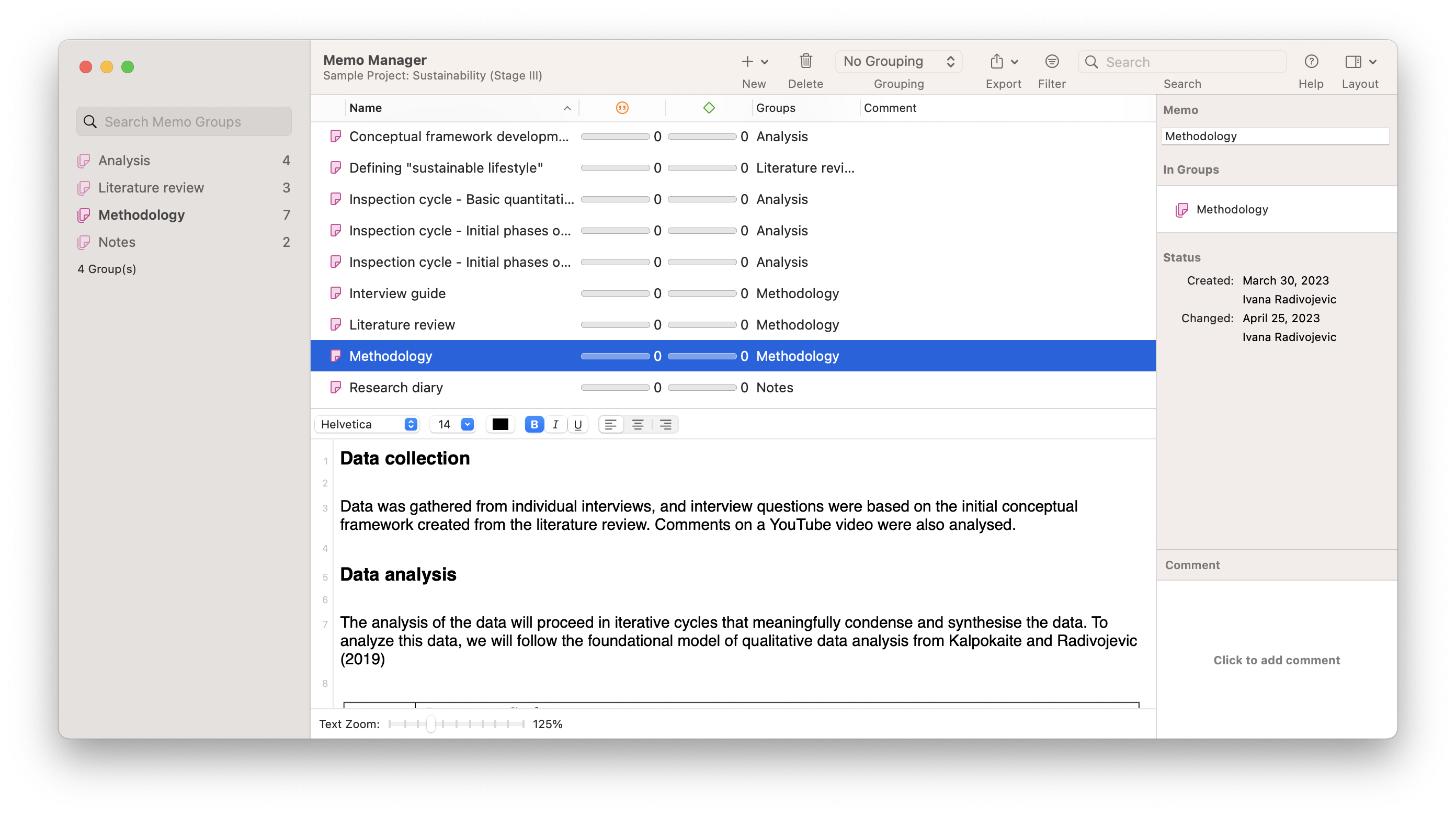
Once the data are collected, to what degree are the analytic techniques likely to ensure the discovery of the full range of relevant and salient themes and topics? To what degree do the analytic strategies maximize the potential for finding relationships among themes and topics? What checks are in place to ensure that the discovery of patterns and models are relevant to the research question? Finally, what standards of evidence are required to ensure readers that results are supported by the data?
The clear challenge is to identify what questions are most important for establishing research rigor (trustworthiness) and to provide examples of how such questions could be answered for those using qualitative data. Clearly, rigorous research must be both transparent and explicit; in other words, researchers need to be able to describe to their colleagues and their audiences what they did (or plan to do) in clear, simple language. Much of the confusion that surrounds qualitative data collection and analysis techniques comes from practitioners who shroud their behaviors in mystery and jargon. For example, clearly describing how themes are identified, how codebooks are built and applied, and how models were induced helps to bring more rigor to qualitative research.
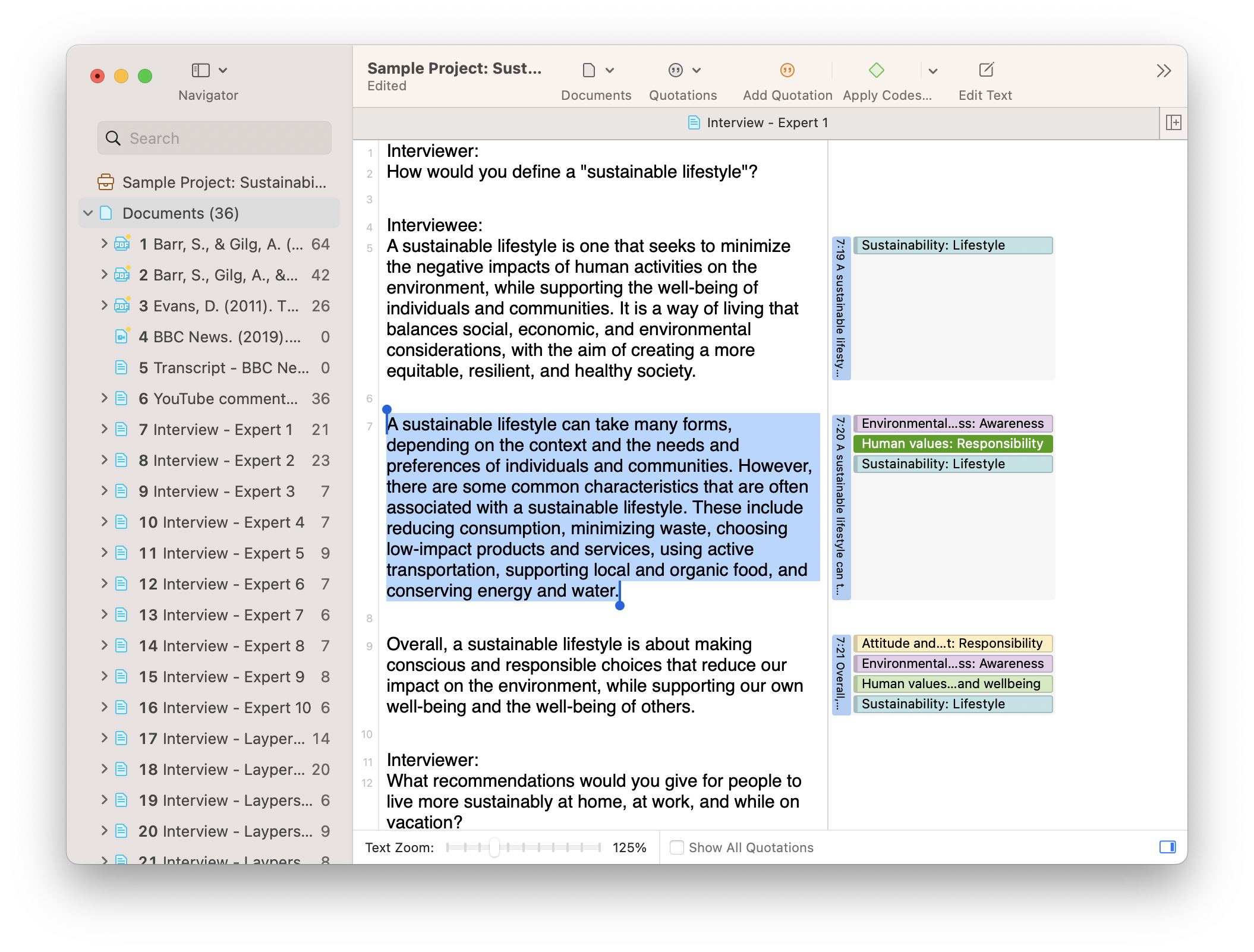
Researchers also must become more familiar with the broad range of methodological techniques available, such as content analysis, grounded theory, and discourse analysis. Cross-fertilization across methodological traditions can also be extremely valuable to generate meaningful understanding rather than attacking all problems with the same type of methodological tool.
The introduction of methodologically neutral and highly flexible qualitative analysis software like ATLAS.ti can be considered as extremely helpful indeed. It is highly apt to both support interdisciplinary cross-pollination and to bring about a great deal of trust in the presented results. By allowing the researcher to combine both the source material and his/her findings in a structured, interactive platform while producing both quantifiable reports and intuitive visual renderings of their results, ATLAS.ti adds new levels of trustworthiness to qualitative research. Moreover, it permits the researcher to apply multiple approaches to their research, to collaborate across philosophical boundaries, and thus significantly enhance the level of rigor in qualitative research. Dedicated research software like ATLAS.ti helps the researcher to catalog, explore and competently analyze the data generated in a given research project.
Ultimately, transparency and rigor are indispensable elements of any robust research study. Achieving transparency requires a systematic, deliberate, and thoughtful approach. It revolves around clarity in the formulation of research objectives, comprehensiveness in methods, and conscientious reporting of the results. Here are several key strategies for achieving transparency and rigor in research:
Clear research objectives and methods
Transparency begins with the clear and explicit statement of research objectives and questions. Researchers should explain why they are conducting the study, what they hope to learn, and how they plan to achieve their objectives. This involves identifying and articulating the study's theoretical or conceptual framework and delineating the key research questions. Ensuring clarity at this stage sets the groundwork for transparency throughout the rest of the study.
Transparent research includes a comprehensive and detailed account of the research design and methodology. Researchers should describe all stages of their research process, including the selection and recruitment of participants, the data collection methods, the setting of the research, and the timeline. Each step should be explained in enough detail that another researcher could replicate the study. Furthermore, any modifications to the research design or methodology over the course of the study should be clearly documented and justified.
Thorough data documentation and analysis
In the data collection phase, researchers should provide thorough documentation, including original data records such as transcripts, field notes, or images. The specifics of how data was gathered, who was involved, and when and where it took place should be meticulously recorded.
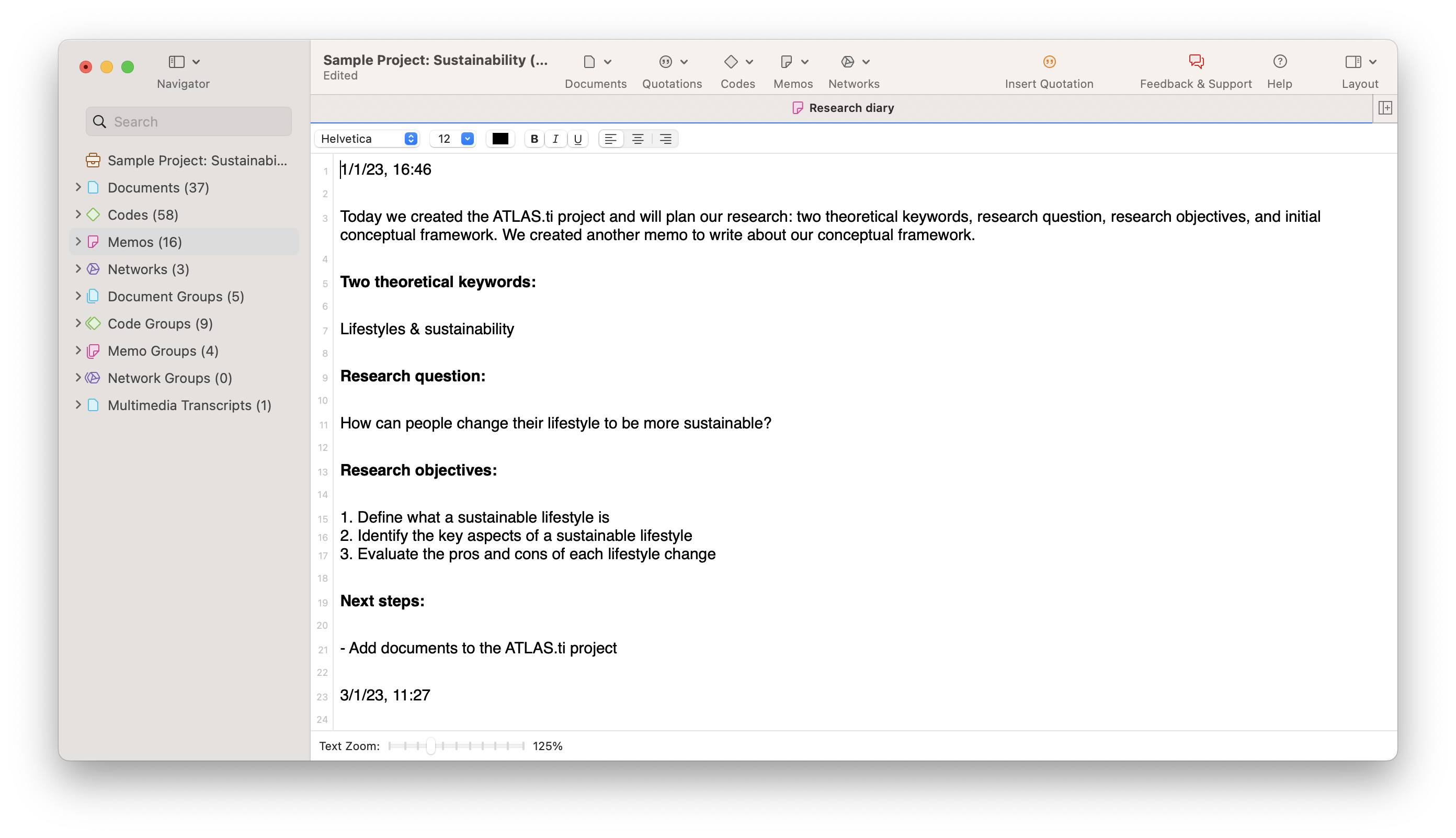
During the data analysis phase, researchers should clearly describe the steps taken to analyze the data, including coding processes, theme identification, and how conclusions were drawn. Researchers should provide evidence to support their findings and interpretations, such as verbatim quotes or detailed examples from the data. They should also describe any analytic software or tools used, including how they were used and why they were chosen.
Reflexivity and acknowledgment of bias
Transparent research involves a process of reflexivity, where researchers critically reflect on their own role in the research process. This includes considering how their own beliefs, values, experiences, and relationships with participants may have influenced the data collection and analysis. Researchers should maintain reflexivity journals to document these reflections, which can then be incorporated into the final research report. Researchers should also explicitly acknowledge potential biases and conflicts of interest that could influence the research. This includes personal, financial, or institutional interests that could affect the conduct or reporting of the research.
Transparent reporting and publishing
Transparency also involves the open sharing of research materials and data, where ethical and legal guidelines permit. This may include providing access to interview guides, survey instruments, data analysis scripts, raw data, and other research materials. Open sharing allows others to scrutinize, transfer, or extend the research, thereby enhancing its transparency and trustworthiness.

Finally, the reporting and publishing phase should adhere to the principles of transparency. Researchers should follow the relevant reporting guidelines for their field. Such guidelines provide a framework for reporting research in a comprehensive, systematic, and transparent manner.
Furthermore, researchers should choose to publish in open-access journals or other accessible formats whenever possible, to ensure the research is publicly accessible. They should also be open to critique and engage in post-publication discussion and debate about their findings.
By adhering to these strategies, researchers can ensure the transparency of their research, enhancing its credibility, trustworthiness, and contribution to their field. Transparency is more than just a good research practice—it's a fundamental ethical obligation to the research community, participants, and wider society.



